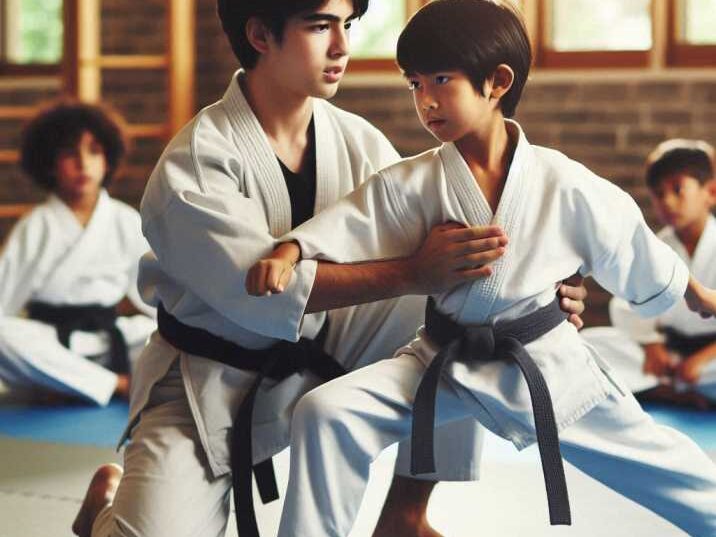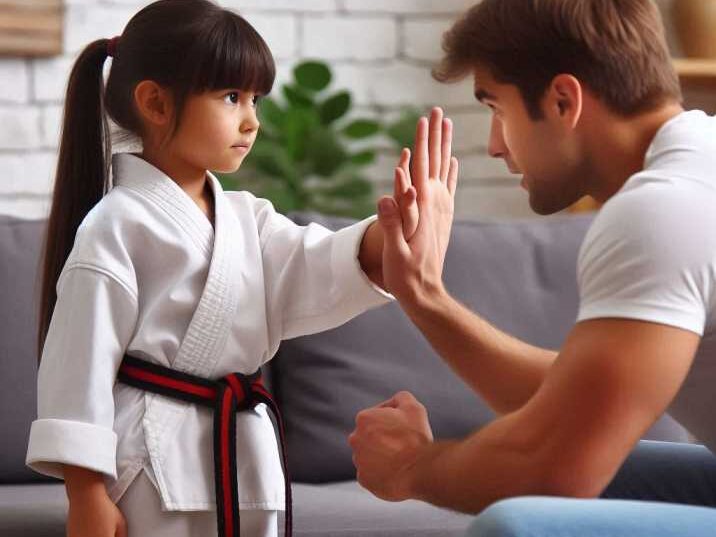Bullying is a serious issue that many children face, both in school and online. How do martial arts help kids deal with Bullying? It can be challenging, and knowing how to respond effectively is critical. Martial arts offer a unique and powerful way to help children develop the skills to face these situations confidently. From building physical strength to developing self-discipline, martial arts training equips kids with the tools to stand up to bullying while avoiding violence whenever possible. Let’s dive deeper into how this training makes a difference.

Introduction: Empowering Kids Through Martial Arts
Table of Contents
Martial arts training involves more than just learning how to fight. It also instills important life lessons such as self-discipline, confidence, emotional control, and respect for others. Remember the following text:
The Importance of Confidence in Facing Bullies
1. Building Self-Confidence
Confidence is a key element in combating bullying. Bullies often target children who seem timid or unsure of themselves. Martial arts training helps children develop a strong sense of self-confidence through the mastery of skills and consistent practice. With increased confidence, children are more likely to stand tall, make eye contact, and use assertive body language— all of which can deter a bully from targeting them.
2. Improved Body Language
Through martial arts, kids learn how to carry themselves confidently. Instructors emphasize posture, eye contact, and assertive communication, which can signal to bullies that a child is not an easy target. Non-verbal cues are critical, and kids are taught to maintain a calm yet confident stance during confrontations.
Enhancing Focus and Discipline
3. Focus and Discipline
Training in martial arts requires deep concentration and discipline. These skills are transferable to other areas of a child’s life, such as school. The ability to focus and stay on task is essential for productivity and success. Being disciplined helps children remain calm when dealing with bullying situations. Instead of reacting emotionally, martial arts students are trained to assess the situation and respond thoughtfully.
4. Resisting Peer Pressure
Peer pressure often fuels bullying. Kids who practice martial arts develop strong willpower and resilience to resist joining in on bullying behaviors or being easily influenced by others. By learning to respect themselves and others, children become leaders rather than followers in situations where peer pressure is involved.
Learning Self-Control and Emotional Management
5. Emotional Regulation
Kids often face intense emotions when dealing with bullying, such as fear, anger, or frustration. Martial arts teaches students to manage their emotions effectively. Through breathing exercises, meditation, and focus training, children learn to control their reactions, making it less likely for them to lash out or retaliate impulsively.
6. Dealing with Provocation
One essential lesson in martial arts is learning how to avoid physical confrontations. Children are taught that self-defense is a last resort. They are instructed to use verbal de-escalation tactics to calm the situation before it escalates. This allows them to handle bullying without resorting to violence.
Physical Strength and Self-Defense
7. Physical Strength
Martial arts significantly improve a child’s physical fitness, making them stronger and more coordinated. While the primary goal of martial arts isn’t to fight, having physical strength can help children feel more secure in their ability to protect themselves if necessary. The training emphasizes that strength should be used responsibly, only for defense.
8. Self-Defense Techniques
Martial arts equip children with practical self-defense techniques. These are crucial skills for avoiding injury if physical bullying occurs. However, children are taught that violence is a last resort and that the best way to handle a situation is to defuse it calmly.
Respect and Responsibility
9. Respect for Others
Respect is a cornerstone of all martial arts disciplines. Kids are taught to respect their instructors, fellow students, and themselves. By developing this sense of respect, children are less likely to engage in bullying behaviors themselves. They understand the importance of treating others with kindness and fairness, making them less likely to bully and more likely to intervene if they witness bullying.
10. Sense of Responsibility
Martial arts training also instills a sense of responsibility in children. They understand that their actions have consequences and learn how to make responsible choices. This mindset is crucial when dealing with bullies, as children can respond in ways that are measured and appropriate, rather than reactive and impulsive.
Table of Information: How Martial Arts Training Prepares Kids for Bullying
| Martial Arts Skill | Benefits of Bullying Situations |
|---|---|
| Confidence Building | Reduces chances of being targeted by bullies |
| Emotional Control | Helps avoid emotional outbursts and stay calm |
| Verbal De-escalation | Provides non-violent ways to diffuse confrontations |
| Self-Defense Techniques | Teaches children how to protect themselves if needed |
| Focus and Discipline | Increases ability to assess situations calmly |
| Respect for Others | Encourages kind and fair treatment of others |
| Resisting Peer Pressure | Strengthens willpower to resist engaging in bullying |
Conclusion: A Holistic Approach to Bullying
Martial arts training offers children more than just physical benefits—it provides them with the emotional and mental tools needed to confront and constructively manage bullying. “By building confidence, learning self-defense, and developing emotional control, children are better prepared to respond to bullying situations without resorting to aggression. This combination of skills helps them navigate school, social situations, and online interactions with greater resilience. Martial arts training not only teaches kids to defend themselves physically, but also equips them to handle bullying with maturity, respect, and calm confidence.

5 FAQs About How Martial Arts Help Kids Deal with Bullying
1. Can martial arts help kids deal with bullying without fighting?
Yes, martial arts teaches verbal de-escalation and emotional control, helping kids avoid physical confrontations.
2. What martial arts is best for preventing bullying?
Styles like Brazilian Jiu-Jitsu and Karate focus on self-defense and confidence-building, which helps deal with bullies.
3. How does martial arts improve confidence?
Through training, kids master skills, improve their physical abilities and gain mental strength, which builds self-confidence.
4. Is self-defense always necessary when dealing with bullies?
No, martial arts emphasizes using self-defense as a last resort. Kids are taught to avoid physical confrontations whenever possible.
5. Does martial arts make kids more aggressive?
No, martial arts emphasizes respect, discipline, and self-control, which reduces the likelihood of aggressive behavior.


